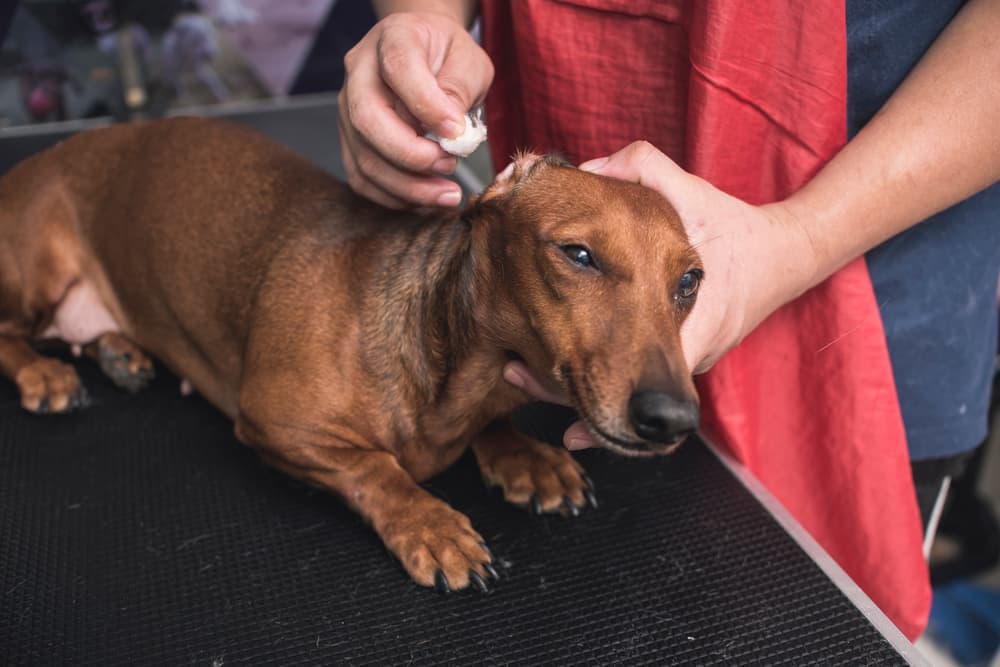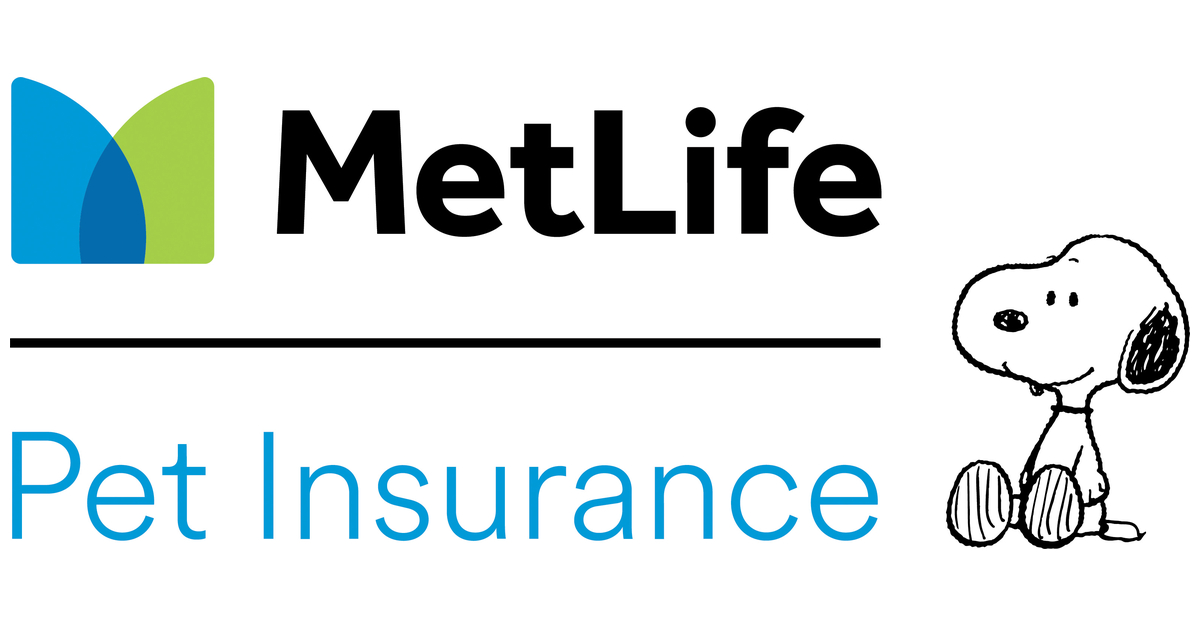Dog Ear Wax Color Chart: What Different Shades Mean

It’s normal (and necessary) for dogs to have some ear wax buildup. Excessive ear wax in dogs, or wax that comes in certain colors or consistencies, however, can indicate an ear infection.
So how can you differentiate between normal dog ear wax and wax that means something’s off kilter? We designed a guide—which includes a handy dog ear wax color chart—to help walk you through the process.
Only your veterinarian can provide proper diagnosis and treatment, so if you’re concerned about what your dog’s ear wax means, we recommend setting up a consultation.
Do Dogs Have Ear Wax?

All dogs have ear wax (known as cerumen), an oily substance made of discarded skin cells and gland secretions. It’s visible on the outer portion of your dog’s ear canal.
Dog ear wax may look unappealing, but it actually serves an important purpose. It traps debris, pollen, and dead skin cells, which are then carried out of the ear with the wax. Without this function, excessive dog ear wax would accumulate and cause a blockage, leading to infections.
Because ear wax is oily, it repels water, which in turn prevents excess moisture from entering the ear canal. Dog ear wax also has properties that help control the growth of bacteria and fungi.
Normal Dog Ear Wax: What Does it Look Like?

Cerumen serves important functions, but excessive ear wax in dogs (and color or consistency that’s abnormal) may mean something’s amiss.
Normal dog ear wax is typically (light) brown in color, says Dr. Lisa Goin, a partner doctor with Heart + Paw in Glen Mills, Pennsylvania. “But there should only be a small amount of discharge and it should not be accompanied by redness or itching. If there is redness or itching, even a small amount of normal looking discharge can indicate an infection.”
Dog ear wax consistency should be semi-soft, not oozing or very moist. “The inside of a healthy dog’s ear leather and the inside of the external ear canal should be light pink, clean of excessive hair, have no apparent inflammation, wax, or residue and should smell relatively clean and fresh, not fetid or musky,” says Dr. Jerry Klein, chief veterinary officer for the American Kennel Club.
Dog Ear Wax Color Chart
Dog ear wax can come in a range of colors, each offering important clues about your pup’s ear health. Though our dog ear wax color chart can help you determine what the gunk in your pup’s ears means, we encourage you to contact your veterinarian with any concerns.
Dark Brown / Black Dog Ear Wax
Dark brown or black dog ear wax can indicate the presence of ear mites, especially if it resembles coffee grounds.
It’s also commonly associated with yeast (and other fungal) infections, and sometimes bacterial ear infections, says Klein. “It’s a good idea to consult with a veterinarian if earwax is this color.”
Brown Dog Ear Wax
Unlike dark brown dog ear wax, which can often signal an infection or ear mites, veterinarians say normal dog ear wax is usually light brown in color.
Brown dog ear wax that’s accompanied by odor or inflammation, however, may indicate an infection, says Klein. Other signs to watch for (even if the ear wax is light brown) are excessive discharge, redness, or itching, says Goin. “If there is redness or itching, even a small amount of normal looking discharge can indicate an infection.”
Yellow Dog Ear Wax
A small amount of yellow ear wax in dogs is generally considered normal, says Klein. Though, “An infection can be festering if there’s swelling, redness, or discomfort.” Additionally, says Goin,“Yellowish discharge that is very moist can indicate a severe infection.”
Keep in mind that depending on the shade, yellow can sometimes resemble light brown.
Red Dog Ear Wax
Red or reddish brown dog ear wax is a sign of blood. “This can be due to injuries, bug bites, or irritation caused by pruritis (itchiness), says Klein.” Veterinarians recommend bringing your dog in for a consultation if you see red ear wax. That itching, for example, might be caused by an infection, fleas, mites, or allergies—which can only be properly diagnosed and treated by a veterinarian.
Green Dog Ear Wax
Green ear wax, if combined with a foul odor, is often a product of yeast, fungal, or bacterial infections, says Klein. If your dog has green ear wax, he recommends taking your dog in for a veterinary consultation.
Other signs that your dog might have an ear infection includes scratching, head shaking, pain, and inflammation.
Gray Dog Ear Wax
Gray ear wax is another color that means your dog may have an ear infection, says Klein. “But it can also indicate dirt and debris build-up. Clean your dog’s ears and see if their earwax returns to a normal color, such as yellow or light brown.”
Dog Ear Wax Vs. Ear Mites

Ear mites are tiny parasites that live on the outer part of the dog’s ear canal. “The discharge is brown but very dry and often looks like coffee grounds. The ears are typically very itchy as well and inflammation in and around the ears is possible,” explains Goin. Ear mites tend to be more commonly found in kittens and puppies, rather than adult animals, she adds.
A dog with an ear mite infestation might also experience other symptoms similar to those of an ear infection, including head shaking and smelly ears.
The only way to know with certainty whether your dog has ear mites is by examining the ear debris under a microscope for the presence of ear mite eggs or adults, says Klein. “This type of exam (cytology) is usually performed by your veterinarian or a veterinary technician.”
How to Clean Dog Ear Wax

Every dog has different ear cleaning needs. Some dogs don’t need their ears cleaned often, or even at all. Other dogs, like those who spend a lot of time in the water or who have allergies may need it done frequently.
“Certain breeds or types of dogs tend to get more hair production in the ear canal or tend to produce more or heavier amounts of ear wax,” explains Klein. “This includes breeds such as Poodles, Schnauzers, and Cocker Spaniels.” Given this variation, it’s best to consult with your veterinarian before proceeding with an ear cleaning.
Generally, “Weekly ear cleansings using a basic dog ear cleanser can be very helpful in preventing ear infections,” says Goin.
To prevent damage to your dog’s inner ear, Goin recommends asking your veterinarian for a cleaning demo. If you’re confident about cleaning your dog’s ears at home, Klein recommends the following steps for ear wax removal.
Step 1: Saturate a cotton ball with a veterinarian-recommended ear cleaner and wipe out the inside of the ear, without going in too deeply.
Step 2: Then, “Gently squeeze the cotton ball and gently massage the base of the ears. Most dogs love this if their ears are not overly inflamed or painful,” says Klein.
Step 3: Allow your dog to shake his head, “which may bring material closer to the surface where you can see it and wipe it clean.”
Step 4: Veterinarians and certified dog trainers often recommend offering your pup a favorite treat to make the experience more positive for your pup.
Safety Tips for Removing Ear Wax From Dogs

Only clean what you can visibly see. Focus on the inside of the ear leather (called the pinna) and the downward visible part of the ear canal, says Klein. “You shouldn’t go digging to excavate as you may either push material further down the canal or possibly damage the sensitive eardrum.”
Avoid using cotton swabs. It can damage the dog’s ears. “I have seen the cotton dislodge and get stuck deep in the ear canal, requiring a trip to the emergency room to have it removed,” adds Klein.
Opt for a veterinarian-recommended ear cleaner. Veterinarians generally advise against using vinegar, hydrogen peroxide, and other home-made remedies. “Some homemade remedies may clean an ear adequately for the short term, but may cause long term concerns by significantly drying and altering the ear’s natural pH or flora,” explains Klein. “If used on an irritated or damaged ear, it could cause excessive pain and possibly more severe damage to sensitive tissues and the ear drum.”
Whichever product you do use, be sure to follow the directions provided on the label.
The good news is that with practice, ear cleanings should become easier – including for your dog. “Since most vet-approved medications have some form of anti-inflammatory medication combined with other medications, subsequent cleaning of the ears tends to become easier, and your dog will generally tolerate them or even like the procedure,” says Klein.
When Not to Clean Your Dog’s Ears
Any ear wax that’s not light brown or yellow in color is a sign that something might be off—so before removing ear wax from your dog, check with your veterinarian. Also avoid cleaning your dog’s ears if you notice excessive dog ear wax buildup, oozing, a very moist consistency, a foul smell, cuts, abrasions, or signs of injury. In these scenarios, cleaning a dog’s ears can worsen some conditions and cause additional pain.
When to See a Veterinarian

This section features an affiliate link, meaning GreatPetCare may earn a small commission if you click through and make a purchase.
If your dog seems to be in pain when you touch his ears, take him to your veterinarian as soon as you can for proper diagnosis and treatment, says Klein. “Or if the ear canals are extremely red, inflamed and thickened, or if they have significant discharge, often foul or fetid in nature.”
In the event of an unexpected ear infection where further testing and medication are required, costs can escalate. A pet insurance policy from MetLife reimburses pet parents for a percentage of covered veterinary bills. Dogs are a lot like human kids – you never know when an emergency will present itself. You can, however, be prepared and rest easy that medical bills are covered.

- Get up to 90% of your bill reimbursed.
- No breed exclusions or upper age limits.
- Coverage for accidents start immediately.
Ignoring signs can also prevent your pup from getting adequate treatment. Dark brown dog ear wax, for example, especially if it resembles coffee grounds, may signal a mite infestation. In this case, the dog would require anti-parasite treatment, not just a cleaning.









